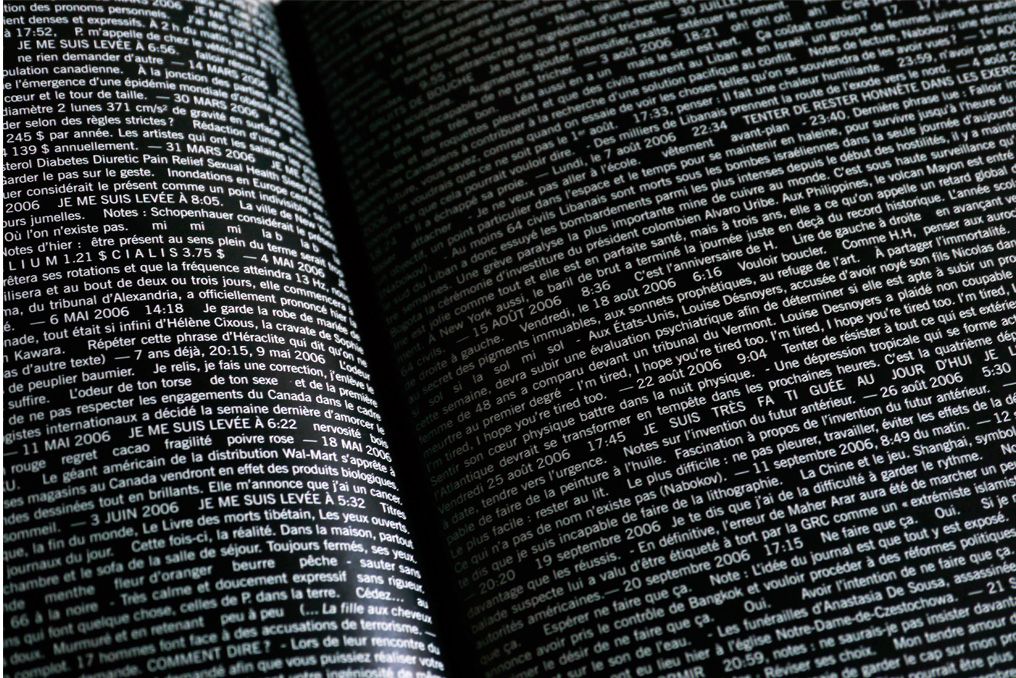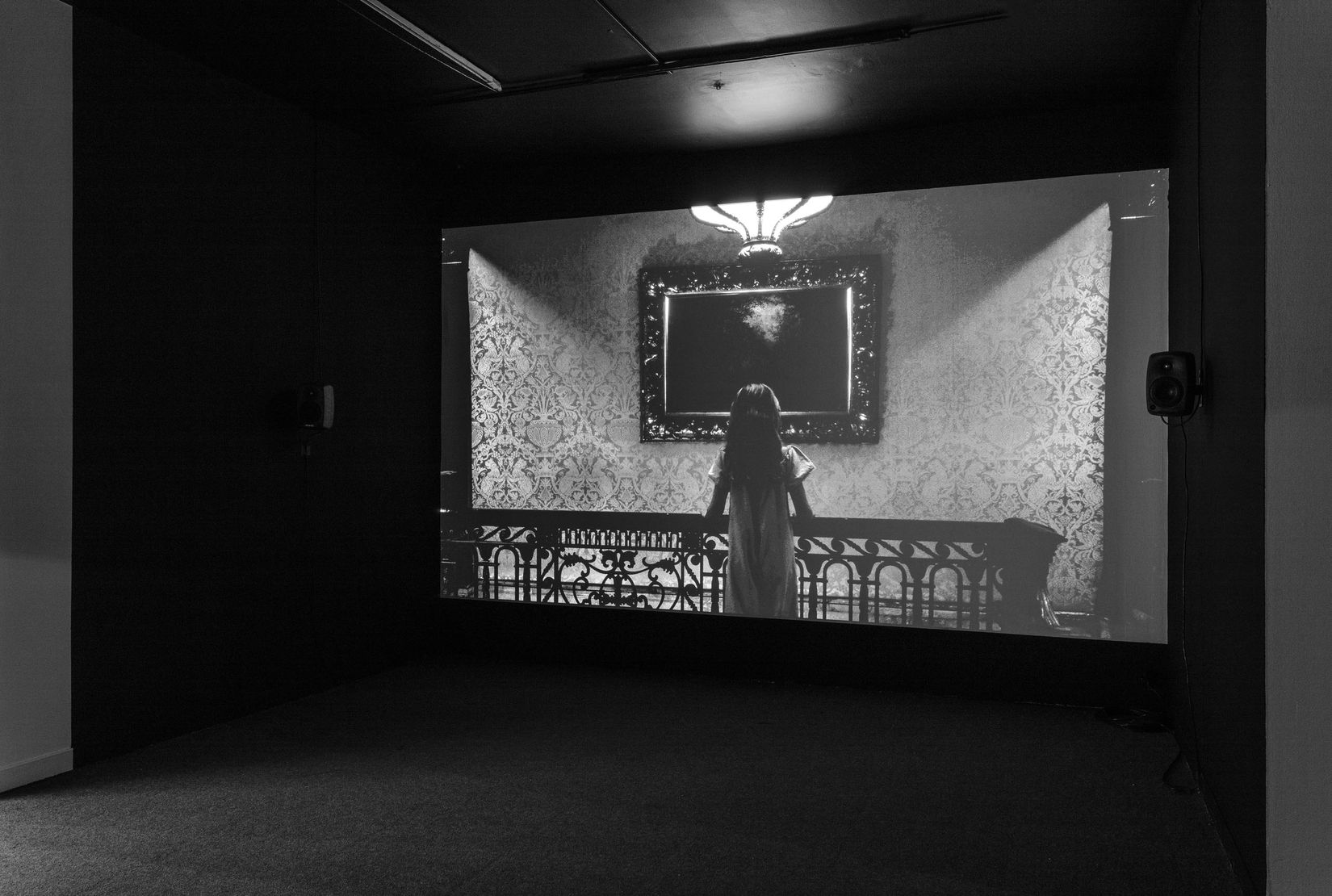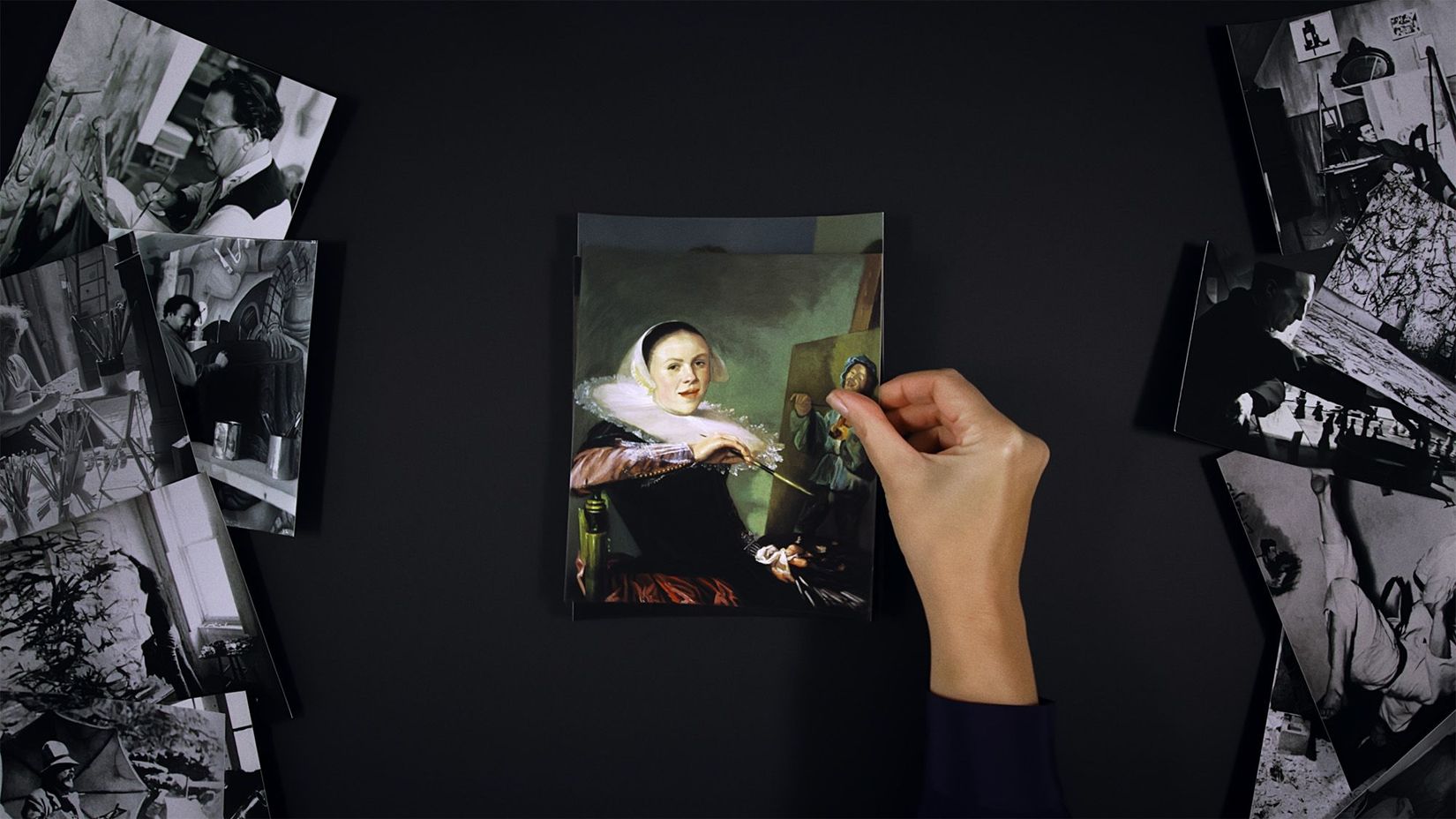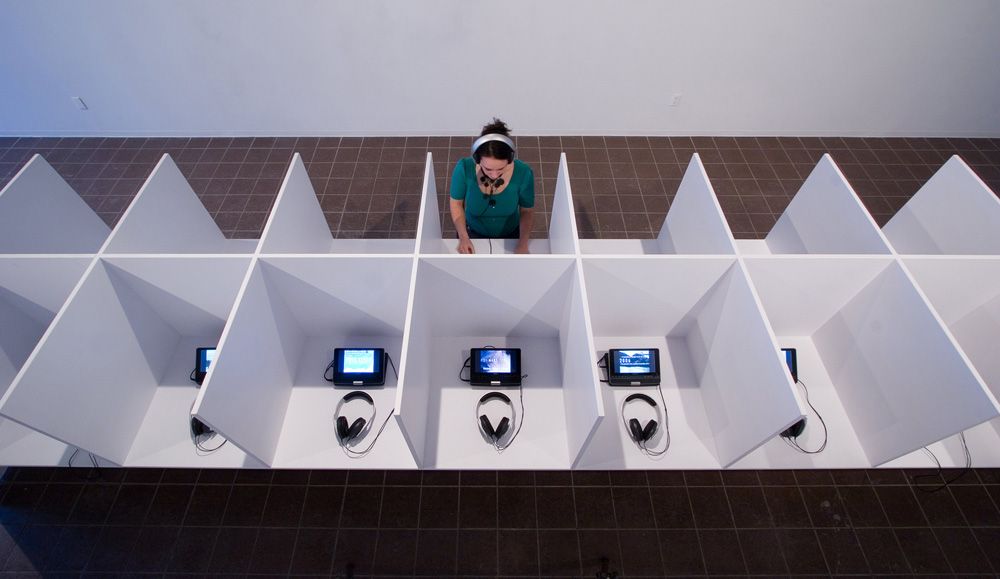
Claire Savoie 05.02.2006 – 05.02.2007 (date-vidéos)
2007.01.20 - 03.03
Densifying the Everyday: The Work of Claire Savoie
MARIE-ÈVE CHARRON
One does not abolish the everyday; one occasionally circumvents it, or densifies it.1 – Pascal Bruckner
For some years now, the work of Claire Savoie has deployed a poetics of grazing and dizziness. Paradoxically, the artist has mapped out the parameters of that poetics via mechanisms that engage the senses of the receiver to their highest degree of acuity—here, the gaze diverted; there, the sense of touch stimulated; elsewhere, one’s hearing captivated, by diverse and demanding strata of sound. By grazing, then, we mean here a drawing back to the surface of sensory processes that have been interiorized. Dizziness, meanwhile, emerges from an intensifying of the presence of the body, perceived and perceiving the world.
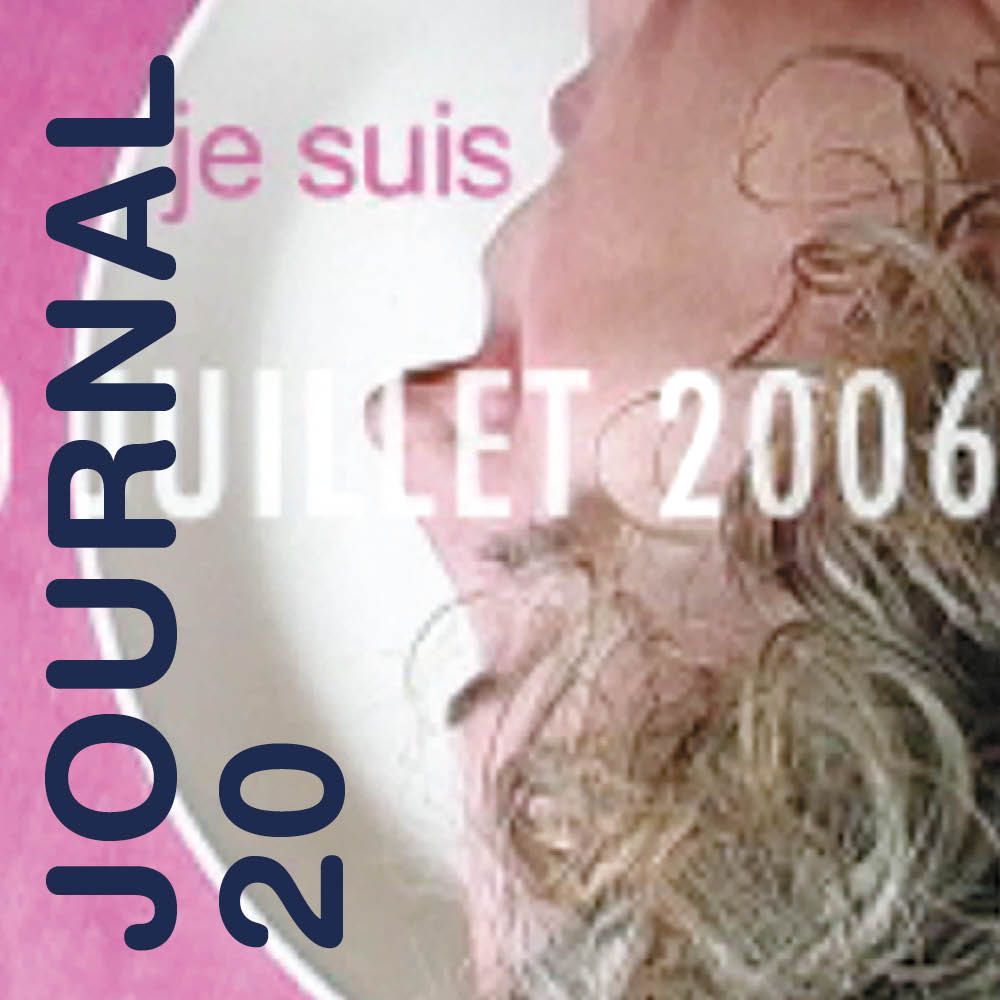
This exhibition speaks to the artist’s continued interest in the spatiotemporal considerations that forge the anchoring of the subject to the world. The avenues she takes appear more personal than in previous works. Here, however, known codes of the diary format are present. Each of the monitors delivers, in capsule format, the textual, the visual and the sound record of one day. In the fashion of the Japanese conceptual artist On Kawara (an admitted reference), the artist collects, in the space of a day, the material needed to produce these short audio and video recordings. They are then played back as loops. As a rule, they include the textual entry of the recording date, a written or spoken summary of the topic – and the artist’s confidences which are sometimes stated in the first person singular but most often indirectly apparent in the projected shadow of her body, in the agitation of her handheld camera, and even in the rhythm of her breathing.
Indeed, the artist-diarist has deliberately blurred the registers of the various narratives unfolding in the sparse “pages” of her journal. First of all, one borrowed from the news media: the appearance in the frame of textual references to current events mimics the horizontal scrolling banner employed by the all-news networks. The fleeting infiltration of news into the image, concurrently with the artist’s private speech, evokes an invasive dimension. This is the background noise that she instills. In multiple layerings and overlappings, the subjective thoughts of the artist are then added. These are no less elliptical, but here the intent is to reinstate the working processes of memory and the ways they select, hierarchize, isolate, group together… in short, the way they manipulate fragmentary and more complete recollections in order to process and retain them. Although the raw material of each recording refers to a specific day of information collection, montage, benefits from the elapsed time interval, permits flashbacks and encourages palimpsests and rereadings.
The artist has retained only those shot-sequences in which a quality of presence was concentrated and that revealed inspiring details, or salient coincidences and discoveries: rain swelling on a glass wall, a scar breathing, a monumental architectural form melting… Woven together from diverse sources, the sound and text elements in turn complexify the visual field. The capsules, then, are not documentary in texture but more dreamlike, reflective, contemplative and introspective. The monitors’ arrangement and format—calling to mind postcards and photos in family albums—encourage this perception, inviting the visitor to interrogate the elements randomly and privately.
Because it is generated in the artist’s everyday experience, the project acquires a reflexive dimension that concerns the very development of the work. The views of the studio and the fragmented transcriptions of the artist’s working notes refer to her creative process, as do the action verbs she occasionally lays out in whispers: “qui reprend, qui empêche, qui recommence, qui laisse tomber” (“that repossess, that hinder, that start over, that let down”). The voices overlap, blurring into and erasing each other, making manifest a certain troubled state and, it would seem, an awareness of limits and of incapacities: “Je te dis que je suis incapable de faire de la peinture” (“I tell you that I am incapable of painting”) can be read at one point. Moreover, the repeated uttering “Je me suis levée à…” (“I got up at…”) is a lucid wording of the prime condition for this project’s actuality: being alive, having the ability to testify to one’s presence and, by extension, its implicit fragility. Out of this arguably obsessive process (these daily exercises are still in progress) emerges a body of work confined to “unfinishedness,” but one through which the creator/subject invents herself every day—by densifying the everyday.
